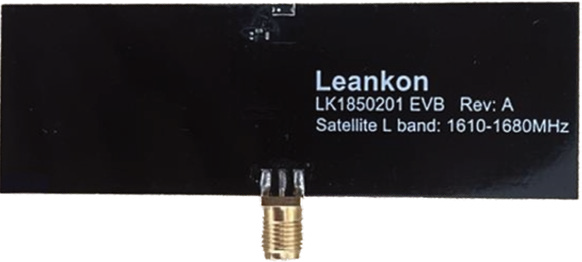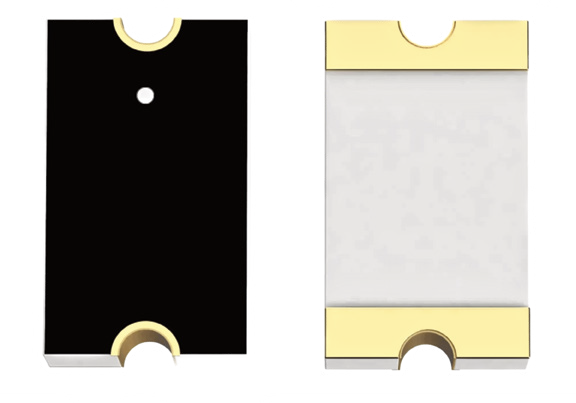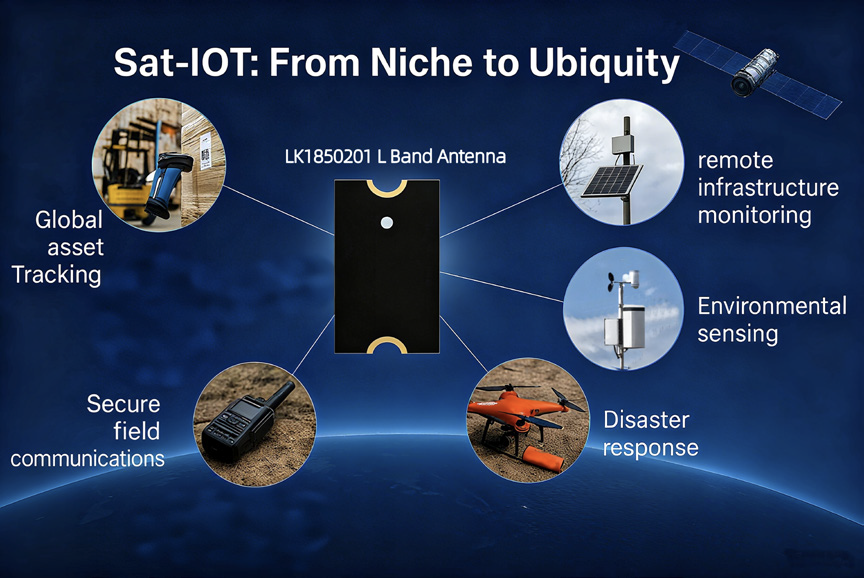Chris Zhong, Engineering Manager, Leankon
The rapid expansion of the Internet of Things (IoT) has elevated satellite-enabled IoT (satIoT) from a niche solution to a core infrastructure for global connectivity. satIoT ensures reliable communication in regions where terrestrial networks are limited or unavailable, supporting mission-critical applications in logistics, energy, maritime, defense, and environmental monitoring.

As satIoT deployments proliferate, device design requirements are evolving. Engineers face mounting pressure to deliver smaller, lighter, and more energy-efficient devices that can operate reliably in challenging environments and still maintain high-quality satellite links.
This shift is driving a new wave of component-level innovation—particularly in antennas, which serve as the critical link between compact hardware and satellite constellations.
One example of this innovation is Leankon’s LK1850201 ultra-small L-band antenna, a purpose-built solution for next generation satIoT and mobile communication devices. By combining a miniature footprint with robust electrical and mechanical performance, the LK1850201 exemplifies how antenna design is evolving to support the new generation of compact, high-reliability satellite-connected products.
Miniaturization: A Defining Trend in satIoT Device Design

The global satIoT market is shifting from specialized, stand-alone terminals to integrated, embedded modules. This transition is reshaping hardware requirements in several key ways:
Form-Factor Constraints: Applications such as asset tracking, wearables, UAVs, and industrial sensors demand components that can be integrated into space-constrained housings without sacrificing RF performance.
Low-Power Operation: Battery-powered devices in remote locations must maximize energy efficiency to extend service life and minimize maintenance costs. Antenna efficiency directly influences power consumption by reducing the transmit power required for a stable link.
Mass Deployment: As the satIoT ecosystem scales to millions of devices, smaller standardized components lower manufacturing costs, streamline assembly, and simplify product design.
For engineers, the antenna often represents a design bottleneck: it must maintain sufficient gain, efficiency, and bandwidth despite being reduced in size to fit today’s compact enclosures. Achieving this balance requires advanced materials, precision design, and careful integration with other system components.
Compact Design with High-Performance Metrics

LK1850201 is engineered to address precisely these challenges. Its key specifications highlight why it is well-suited for current and future satIoT devices:
• Ultra-Small Footprint: Measuring 3.2 × 1.6 × 0.5 mm and weighing less than 0.01 g, the LK1850201 is among the smallest L-band antennas available. It requires only a 6 × 4.5 mm clearance area on the PCB, an important advantage for engineers working with limited board real estate.
• Broad L-Band Coverage: Operating in the 1610–1680 MHz range, it supports all major satellite networks, including Iridium, Globalstar, Inmarsat, Thuraya, Courier, and Skywave. This ensures compatibility for multi-network devices requiring global reach.
• RF Performance: Despite its miniature size, the antenna delivers an efficiency above 65% and a peak gain of 1.6 dBi, providing reliable connectivity for voice, narrowband data, and machine-to-machine (M2M) communication.
• Rugged Reliability: Designed for demanding environments, it maintains stable performance over a –40 °C to +125 °C operating range and supports power handling up to 5 W.
• Simplified Certification: The antenna’s low peak gain aids compliance with regulatory requirements, reducing certification complexity for device manufacturers.
These features make this antenna a strong fit for use cases such as mobile satellite voice terminals, asset-tracking sensors, maritime and aviation safety equipment, and defense or government communication systems—applications where size, reliability, and regulatory compliance are equally critical.

Integration Advantages for
Engineering Teams
Beyond its electrical characteristics, the LK1850201 offers practical benefits that streamline the device development cycle:
• Standard SMD Component: The antenna is fully compatible with automated PCB assembly lines, supporting high-volume production.
• Optimized for Prototyping: Leankon provides antenna samples and dedicated evaluation boards, enabling engineers to validate and optimize antenna performance within their specific device layouts early in the design phase.
• Faster Time-to-Market: By reducing the need for custom antenna design and integration, the LK1850201 allows engineering teams to accelerate prototyping and certification, shortening product development timelines.
For system architects and hardware engineers, these integration features help mitigate development risk and ensure predictable RF behavior—key factors when deploying devices at scale in diverse and often harsh field environments.
Aligning with the Industry’s Direction
The satIoT industry is entering a phase of rapid growth, driven by increased satellite network capacity, falling hardware costs, and expanding use cases. Market forecasts suggest billions of connected devices will rely on satellite links for critical services such as global asset tracking, remote infrastructure monitoring, environmental sensing, disaster response, and secure field communications.
Within this environment, ultra-compact, low-profile antennas are not just incremental innovations—they are enabling technologies. By reducing the size and power requirements of satIoT hardware without compromising performance, they allow engineers to design devices that are more deployable, cost-effective, and energy-efficient.

This component-level advancement directly supports the broader industry goal: to make satellite connectivity as seamless and ubiquitous as terrestrial cellular networks, thereby extending the IoT’s reach to every corner of the globe.
Summary
For engineering teams developing the next generation of satIoT devices, antenna selection is no longer a secondary consideration—it is a core design decision that influences everything from form factor and energy consumption to compliance and time-to-market.
Leankon’s LK1850201 demonstrates that it is possible to achieve high RF performance and rugged reliability in a miniature SMD form factor. By aligning with the key trends of device miniaturization, energy efficiency, and global multi-network compatibility, it provides a practical solution for building high-volume, field-proven satIoT devices.
As the satIoT ecosystem continues to expand, innovative antennas will play a central role in enabling engineers to deliver reliable, compact, and future-ready solutions for global connectivity.

Author Chris Zhong is an Engineering Manager at Leankon, where he leads the global antenna R&D team, overseeing both RF and mechanical design. With moer than 15 years of antenna design expertise, he specializes in 4G LTE, Bluetooth, 5G&mm-Wave, UWB, NFC, LoRa, and WiFi technologies. Chris has a proven track record in end-to-end antenna development, from concept and simulation to prototyping and mass production.
leankon.com

